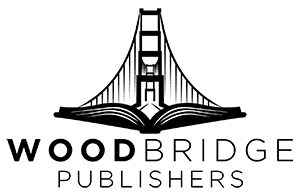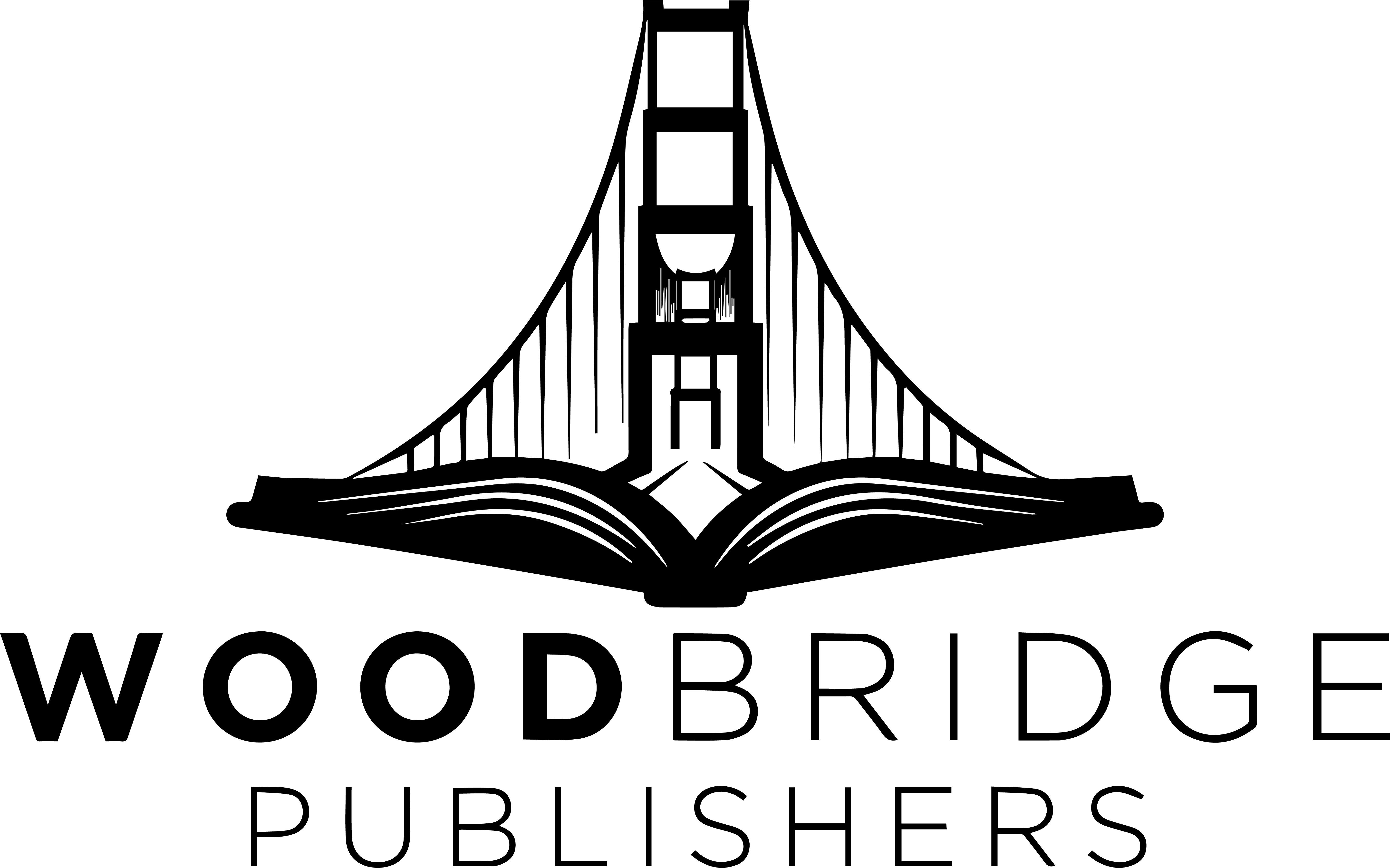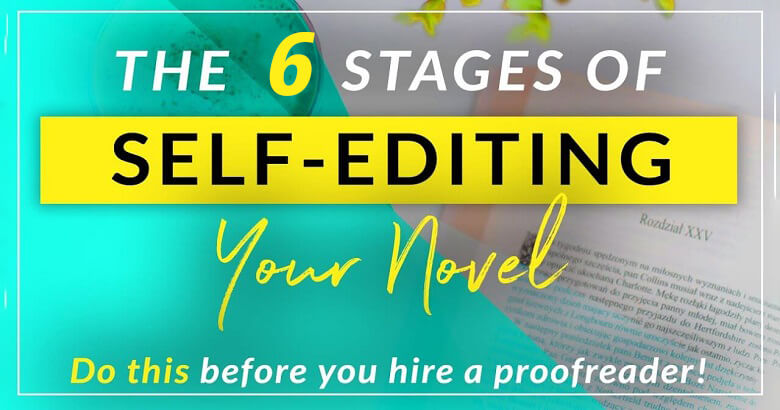Writing a book is a huge milestone, but finishing your manuscript is only the beginning. What truly turns a rough draft into an enticing, professional book is editing.
But, sometimes, first-time or even experienced authors don’t fully understand what editing really means. It’s not just about catching spelling mistakes or fixing commas. Editing is a multi-layered process, and skipping or rushing through any stage can leave your book looking unfinished, no matter how great your ideas are.
So buckle up, in this detailed guide, we’ll break down the stages of editing a book, explain what each one involves, and show you how to approach them in a way that leaves your manuscript clean, consistent, and ready for publication.
Why Editing Your Book Is Crucial for Authors?
Let’s break down why editing is essential for every author, whether you’re writing your first book or your tenth.
1. First Impressions Matter
Readers, agents, and publishers often judge a book by its first few pages. If your manuscript is full of typos, clunky sentences, or inconsistent formatting, they may stop reading, no matter how compelling your story is.
- Poor editing makes a book feel unprofessional.
- Readers are quick to abandon or negatively review books with obvious mistakes.
- A well-edited book builds trust from page one.
2. You Can’t Catch Everything Yourself
Even if you’re great at grammar and detail-oriented, self-editing has limitations. Why? Because your brain fills in the gaps. You know what you meant to say, so you often read what you think is on the page, not what’s actually there.
- Familiarity with your own writing can make you overlook mistakes.
- It’s easy to miss plot holes or pacing issues when you’re too close to the material.
- A fresh set of eyes, human or software, can catch what you miss.
3. Editing Strengthens Structure and Story
Good editing helps your story hold together from beginning to end. Whether it’s fixing a weak plot twist or cutting unnecessary scenes, editing is where your story becomes tight, clear, and effective.
- Removes clutter and streamlines your plot.
- Clarifies your message and story arc.
- Improves character consistency and dialogue.
4. It Polishes Your Voice and Style
Every writer has a voice. But without editing, that voice can get buried under awkward phrasing or unnecessary words. Editing helps your writing shine while keeping your tone intact.
- Refines your unique voice.
- Strengthen readability and rhythm.
- Replaces bland or repetitive language with stronger alternatives.
5. It Fixes Technical Errors and Improves Accuracy
Grammar mistakes, spelling errors, and formatting problems can quickly turn readers off. Even nonfiction authors must ensure facts, dates, and references are correct.
- Corrects grammar, punctuation, and spelling issues.
- Ensures consistency in names, dates, and timelines.
- Validates facts and cross-checks sources for accuracy.
6. Professionalism Boosts Sales and Reviews
In today’s competitive book market, professionalism sets you apart. A well-edited book is more likely to earn positive reviews, gain word-of-mouth marketing, and attract opportunities like media features or awards.
- Increases chances of getting published traditionally.
- Uplift the reader experience, leading to better reviews.
- Makes your book stand out in a crowded market.
7. Editing Is Part of a Long-Term Writing Career
Think long-term: editing isn’t just about this one book. It helps you grow as a writer. By reviewing feedback and edits, you develop a sharper eye and stronger writing habits for your next project.
- Builds your writing skills over time.
- Helps you learn from your common writing mistakes.
- Gives you insight into how your audience receives your work.
The 5 Key Stages of Editing a Book
When we talk about “book editing,” we’re actually referring to several distinct types of editing, each with its own purpose. These stages should be followed in order because they build on one another—from big-picture fixes to fine-tuned polish.
Let’s explore each one in detail:
1. Developmental Editing
Developmental editing, sometimes referred to as content or structural editing, is the most extensive and foundational stage of editing. It involves looking at the big picture of your manuscript—its structure, characters, pacing, and overall narrative- before diving into sentence-level revisions.
What Happens at This Stage?
Developmental editing focuses on broad structural and content-related elements of your manuscript. Here’s what you can expect:
- Evaluating Story Flow: The editor assesses whether the story flows logically from one scene to the next. They’ll look for gaps in the plot or scenes that feel out of place.
- Strengthening Narrative Structure: The editor ensures your book has a clear and engaging structure. They might suggest rearranging chapters or scenes to enhance the reading experience.
- Improving Character Development: Characters are the heart of any story, so this stage often includes revising character arcs. Editors will help fix inconsistencies, motivations, and behavior that don’t align with the rest of the book.
- Fixing Missing or Redundant Content: You might find that some parts of the book feel too drawn out, while other sections may be underdeveloped. The editor will identify and address these gaps.
- Pacing, Tone, and Transitions: The overall pacing of the book is essential for reader engagement. Developmental editing will ensure the book has a good rhythm and that transitions between scenes and chapters feel smooth.
Developmental editing may involve significant rewrites or the addition/removal of entire scenes to ensure the book feels cohesive and emotionally resonant.
Who Needs Developmental Editing?
Every author needs developmental editing, especially if you want your book to have emotional depth and narrative cohesion. Whether you’re writing fiction, nonfiction, memoirs, or self-help books, having someone examine the broader strokes of your story is invaluable.
Tools & Support:
- Fictionary: An AI tool designed to help analyze and strengthen your story’s structure and plot.
- Scrivener: A popular writing tool that allows authors to easily rearrange scenes and chapters, perfect for developmental revisions.
- Beta Readers or Writing Groups: Getting honest, big-picture feedback from other writers or readers can provide valuable insight into your book’s structure.
- Professional Developmental Editors: An expert editor will provide comprehensive feedback on narrative flow, character development, and overall book structure.
2. Line Editing
Once your story structure is solid, it’s time to focus on how your words sound. Line editing takes your manuscript from a rough draft to something with smoother, more engaging prose. This stage is about ensuring your writing has clarity and rhythm, all while maintaining your unique voice.
What Happens at This Stage?
Line editing revolves around refining the language, style, and consistency of your writing. Key focuses include:
- Clarity and Readability: The editor makes sure your writing is easy to read and understand, eliminating awkward phrasing and simplifying convoluted sentences.
- Sentence Rhythm and Flow: Sentence structure and rhythm are important for keeping readers engaged. A line editor looks at sentence variety, helping to maintain a natural flow from one paragraph to the next.
- Word Choice and Sentence Variety: The editor will suggest stronger or more precise word choices and work to eliminate overused words. They also ensure there’s a balance between short, punchy sentences and longer, more descriptive ones.
- Consistency of Style, Voice, and Tone: The editor ensures that your voice stays consistent throughout the manuscript. Whether your book has a formal tone or a casual, conversational style, consistency is key.
- Reducing Redundancy and Wordiness: Line editing involves trimming unnecessary words, phrases, or repetitions that may have crept into your writing. It makes sure every word serves a purpose.
Line editing is where you can really elevate your voice and storytelling, making sure the prose is engaging, clear, and sounds natural.
Examples of Line Edits:
- “He was very tired” becomes “He could barely keep his eyes open.”
- “She walked slowly across the room” becomes “She dragged her feet across the floor.”
These edits don’t change the meaning but make the writing more evocative and interesting.
Tools & Support:
- Hemingway Editor: Highlights long, complex sentences and offers suggestions for simplifying text.
- ProWritingAid: A tool for style analysis and readability improvements.
- Professional Line Editors: Editors who specialize in refining writing style and enhancing prose without changing the essence of the story.
3. Copyediting: Correcting the Technical Details
Once the structure, flow, and voice are perfected, copyediting addresses the technical aspects of your writing. This is where you fix grammar, punctuation, and spelling and ensure consistency throughout your manuscript.
What Happens at This Stage?
Copyediting focuses on the nitty-gritty details that ensure your manuscript adheres to proper writing conventions:
- Grammar, Punctuation, and Spelling: Copyediting corrects all grammatical errors, punctuation issues, and misspellings.
- Consistency: The editor checks for consistency across various elements of the manuscript, such as character names, places, dates, and timelines. They’ll also ensure consistent use of capitalization and formatting.
- Tense Usage and Formatting: The editor ensures that the tenses remain consistent throughout the manuscript and that formatting is clear and readable.
- Factual Accuracy (especially for nonfiction): In nonfiction, ensuring that all facts, dates, and references are accurate is crucial.
This stage is all about making sure your manuscript follows the rules of grammar and is free from errors that could detract from its credibility.
Tools & Support:
- Grammarly Premium: Helps catch grammar and punctuation errors.
- Microsoft Word Editor: A basic but effective tool for spelling and grammar checks.
- LanguageTool: A free, multi-language tool for grammar and spell checks.
- Style Guides: Depending on your genre, using style guides like Chicago Manual of Style (fiction) or APA/AP Style (nonfiction) is essential for consistency.
4. Proofreading
After copyediting, your manuscript goes through the final stage: proofreading. This is the last safety net to catch any lingering issues before publication.
What Happens at This Stage?
Proofreading focuses on minor mistakes that are easy to overlook. This includes:
- Catching Typos and Spelling Errors: Proofreading ensures that no accidental typos or spelling mistakes remain.
- Consistency in Formatting: The proofreader ensures that the formatting of your manuscript is consistent, including paragraph alignment, font sizes, and headers.
- Identifying Formatting Errors: These might include double spaces, incorrect punctuation, or minor layout issues that might have slipped through earlier stages.
- Checking Page Numbers and Layout: For print books, ensuring correct page numbers, headers, and chapter titles is crucial.
Proofreading is the final polish that ensures your manuscript is error-free and ready for the world to see.
Tools & Support:
- Print Your Manuscript: Errors are often easier to spot on paper than on a screen.
- Text-to-Speech Tools: Listening to your manuscript read aloud can help you catch errors you might otherwise miss.
- Freelance Proofreaders: Professional proofreaders on platforms like Reedsy or Upwork can do a final check for you.
5. Formatting Review
While not traditionally considered an editing stage, formatting is an essential final step in preparing your book for publication, especially for self-published authors.
What Happens at This Stage?
Formatting ensures your book looks professional and is ready for both digital and print publishing:
- Adjusting Margins, Font Size, and Line Spacing: These elements ensure your text is readable and visually appealing.
- Aligning Headers, Footers, and Page Numbers: Proper alignment of these elements ensures the book is polished and easy to navigate.
- Inserting Chapter Breaks and Section Dividers: Organizing the manuscript into clearly defined sections makes it easier for readers to follow.
- Creating a Clickable Table of Contents (for eBooks): For digital books, a clickable table of contents is a must for easy navigation.
Formatting may not affect your content, but a poorly formatted book can turn readers off, so this step is crucial.
Tools & Support:
- Vellum (Mac only): A tool that’s great for creating beautiful print and eBook interiors.
- Reedsy Book Editor: A free, intuitive tool for formatting.
- Atticus: A cross-platform tool for easy, beginner-friendly book formatting.
- Kindle Create: Amazon’s official tool for formatting eBooks for Kindle Direct Publishing (KDP).
What If You’re Editing on a Budget?
Let’s be honest: hiring professional editors for every stage can be expensive. If you’re on a budget, you can still produce a high-quality book by combining self-editing, affordable tools, and selective professional help.
Here’s a breakdown of how to edit smart on a budget:
Editing Stage
DIY Options
When to Hire Help
Developmental
Beta readers, Fictionary
Hire if your story feels off or confusing
Line Editing
Hemingway, ProWritingAid
Hire if your writing feels clunky
Copyediting
Grammarly, Word Editor
Hire for nonfiction or complex topics
Proofreading
Print out and self-read
Hire for final quality check
Formatting
Reedsy, Vellum, Kindle Create
Hire for advanced print/eBook design
Final Thoughts
Understanding the Stages of Editing a Book gives you the power to take your manuscript from a rough draft to professional-quality content. Whether you’re publishing on Amazon, submitting to agents, or printing a personal memoir, editing is what ensures your story is clear, clean, and catchy.
You don’t need to be an editing expert. You just need a plan and the right tools.
Take your time. Be thorough. Use writing and editing programs where needed, and don’t be afraid to ask for help.
Because, in the end, a well-edited book isn’t just easier to read; it’s easier to love.
Frequently Asked Questions
1. What’s the difference between line editing and copyediting, and do I need both?
Yes, and here’s why: Line editing improves your writing’s flow, tone, and readability. It’s about how your story sounds. Copyediting, on the other hand, focuses on grammar, punctuation, and factual consistency. Skipping either can result in either beautiful writing with errors or correct grammar in flat, boring prose. Most polished books go through both stages to balance creativity and correctness.
2. Can I combine developmental editing and line editing to save time?
It’s not recommended. Developmental editing may lead to major rewrites, adding scenes, removing chapters, or reshaping characters. If you’ve already line-edited those parts, you’ll end up redoing your work. It’s more efficient to complete structural edits first and then move to sentence-level refinement once your story foundation is solid.
3. How do I know when my manuscript is ready for proofreading?
Your manuscript is ready for proofreading only after all other editing stages are complete—developmental, line, and copyediting. If you’re still finding major sentence rewrites or fixing plot inconsistencies, it’s too early. Proofreading is the final quality check for surface-level errors only—not deeper revisions.
4. What are some warning signs that my manuscript needs developmental editing?
If you’re hearing feedback like “I don’t understand the character’s motivation,” “The pacing feels off,” or “I got lost halfway through,” you likely need developmental editing. It’s also a red flag if beta readers consistently mention confusion, lack of stakes, or dull openings. Developmental editing helps resolve these big-picture issues.
5. Are there any editing tools that can help with the early stages, not just grammar?
Yes! Tools like Fictionary offer AI-based story analysis that helps with plot structure, character arcs, and scene pacing, ideal for developmental editing. ProWritingAid also includes features that go beyond grammar, offering sentence structure and style feedback. These tools can’t replace human editors but are fantastic for early drafts and self-editing.



